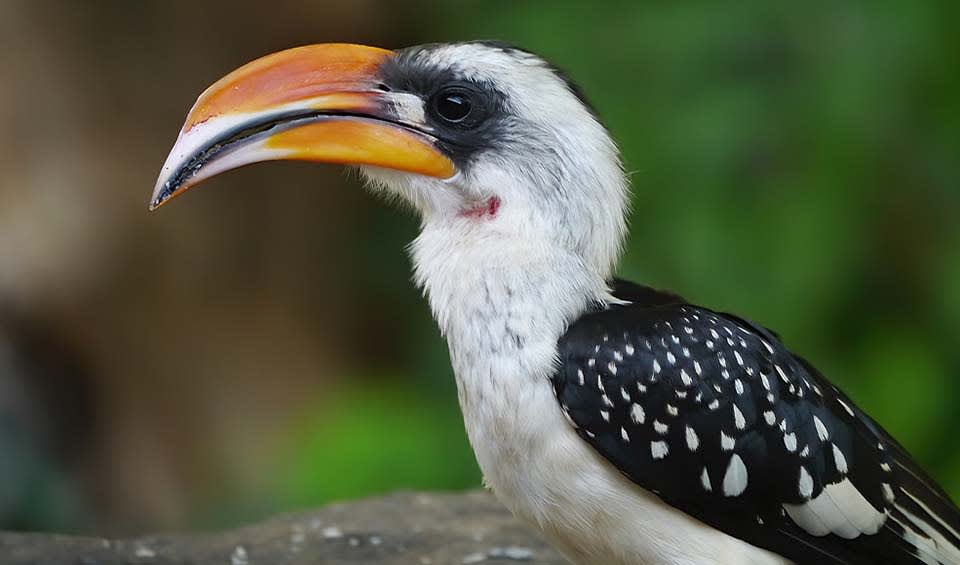A distinctive and somewhat elusive bird found in parts of East Africa, especially in Uganda, Kenya, and South Sudan. As a member of the hornbill family, Jackson’s hornbill stands out with its curved bill, comical expression, and lively calls that echo through dry woodlands and savanna scrub. Although not as large or flamboyant as some of its relatives, this hornbill has a quiet charm and plays an important role in its ecosystem.
Its most recognizable feature is its long, slightly curved bill, which is pale or yellowish and lacks a prominent casque (the hollow structure seen on larger hornbills). This more understated look gives the bird a sleek profile but still retains the unmistakable hornbill silhouette. Its plumage is generally black above and white below, with white spots on the wings and a distinct black-and-white tail.
These hornbills are typically found in dry savanna, scrublands, and open woodland, where they spend much time foraging in pairs or small family groups. They are omnivorous, feeding on insects, small reptiles, fruits, seeds, and even the occasional egg or small animal. Their diet helps them act as seed dispersers, especially for fruiting trees, making them an important part of the ecosystem.
Jackson’s hornbills are social and vocal, communicating with a variety of clucks, cackles, and grating calls. Their voices often carry across the savanna and help them stay in contact with mates or family members. Like many hornbills, they exhibit strong pair bonds, and during the breeding season, they engage in fascinating nesting behavior. The female lays her eggs inside a tree cavity, then seals herself in with a wall made of mud, droppings, and food remains, leaving only a narrow slit through which the male passes food. She stays sealed in until the chicks are old enough to survive outside.
Distribution
 Kenya
Kenya South Sudan
South Sudan Sudan
Sudan Uganda
UgandaAnything we've missed?
Help us improve this page by suggesting edits. Glory never dies!
Suggest an editGet to know me
Terrestrial / Aquatic
Altricial / Precocial
Polygamous / Monogamous
Dimorphic (size) / Monomorphic
Active: Diurnal / Nocturnal
Social behavior: Solitary / Pack / Herd
Diet: Carnivore / Herbivore / Omnivore / Piscivorous / Insectivore
Migratory: Yes / No
Domesticated: Yes / No
Dangerous: Yes / No




